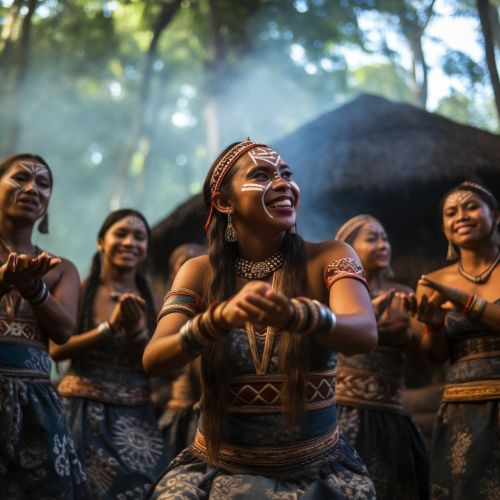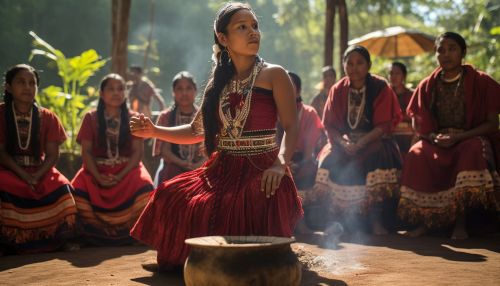Taíno
Introduction
The Taíno were the indigenous people of the Caribbean and Florida, who were among the first Native American groups to encounter Europeans during the period of exploration and colonization. They were part of the larger Arawakan language family, which extended from South America through the Caribbean. The Taíno culture was the most highly developed in the Caribbean at the time of Columbus' arrival in 1492.


History
The Taíno originated in South America, and migrated to the Caribbean islands around 400 BC. They developed complex societies, with distinct social classes, including a nobility and a commoner class. The Taíno societies were organized into cacicazgos, or chiefdoms, each led by a cacique, or chief. The cacique was often a hereditary position, passed down through the maternal line.
The Taíno were skilled farmers, fishermen, and navigators. They cultivated a variety of crops, including cassava, maize, and sweet potatoes, and they were known for their advanced techniques in pottery, weaving, and carving. Their society was marked by a strong spiritual belief system, which included a pantheon of deities, or cemí, and a variety of rituals and ceremonies.
Contact with Europeans
The Taíno were the first indigenous group encountered by Christopher Columbus during his voyage to the Americas in 1492. Initial relations between the Taíno and the Spanish were peaceful, but conflict soon arose as the Spanish sought to exploit the resources of the islands and the labor of the Taíno people. The Taíno population declined rapidly due to the harsh conditions of forced labor, disease, and violent conflict.
Despite this, the Taíno had a significant impact on European culture and language. Many words from the Taíno language have been incorporated into English and other European languages, including 'hurricane', 'hammock', 'canoe', and 'tobacco'.
Culture
The Taíno culture was rich and diverse, with a strong emphasis on community and spirituality. They believed in a pantheon of deities, known as cemí, and they practiced a variety of rituals and ceremonies to honor these deities. The Taíno also had a strong oral tradition, with stories and legends passed down through generations.
The Taíno were skilled artisans, known for their pottery, weaving, and carving. They created intricate designs in their pottery and textiles, and they carved cemí figures from wood and stone. These figures were often used in their religious ceremonies.
Legacy
Despite the significant decline in the Taíno population following contact with Europeans, their cultural and linguistic influence remains evident today. Many words of Taíno origin have been incorporated into English and other languages, and aspects of Taíno culture have been preserved in the traditions and practices of contemporary Caribbean societies.
In recent years, there has been a resurgence of interest in Taíno culture and history, with efforts to preserve and revitalize Taíno traditions. There are also ongoing efforts to recognize the Taíno as a distinct indigenous group, with some individuals and communities identifying as Taíno today.
